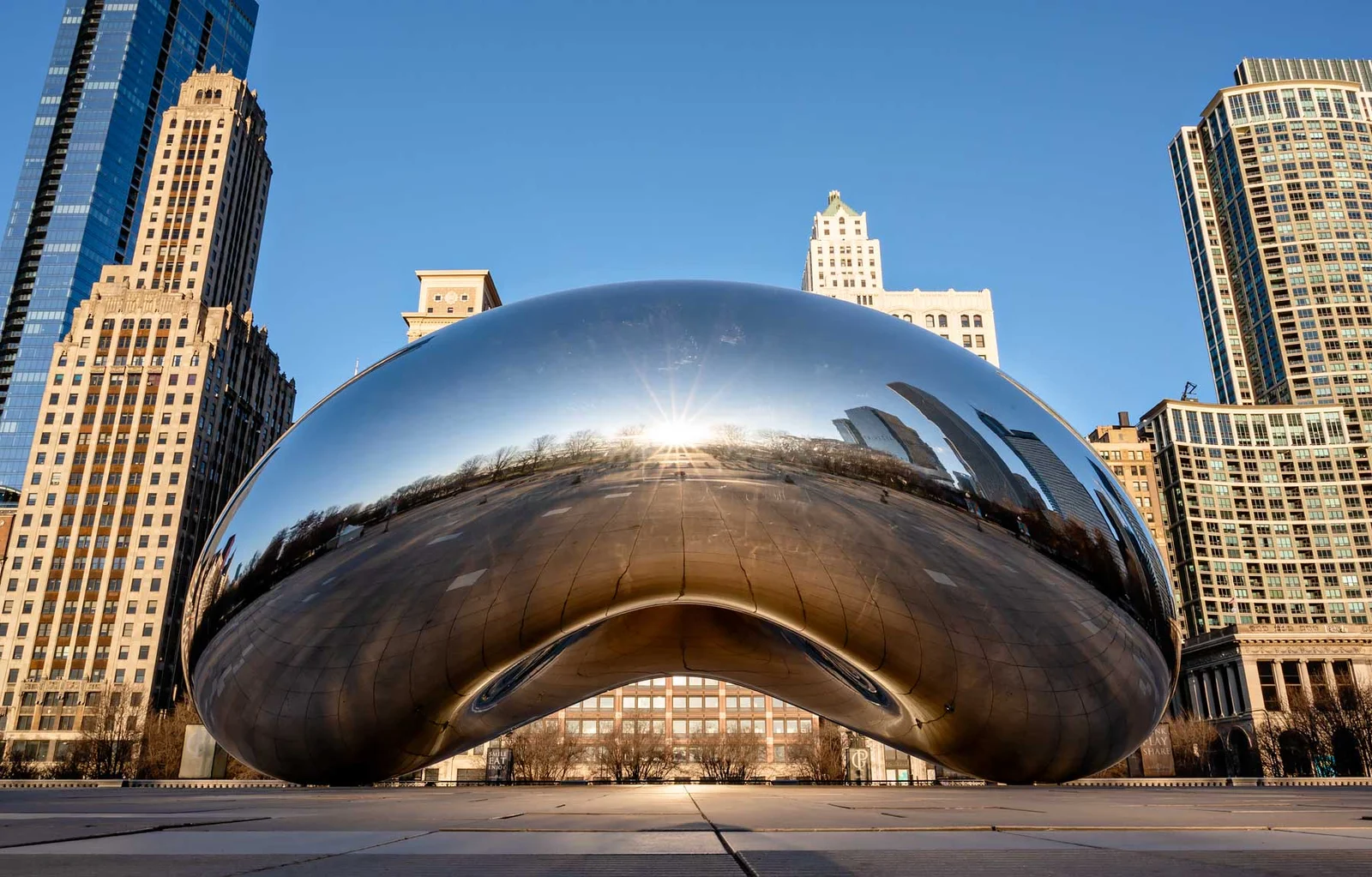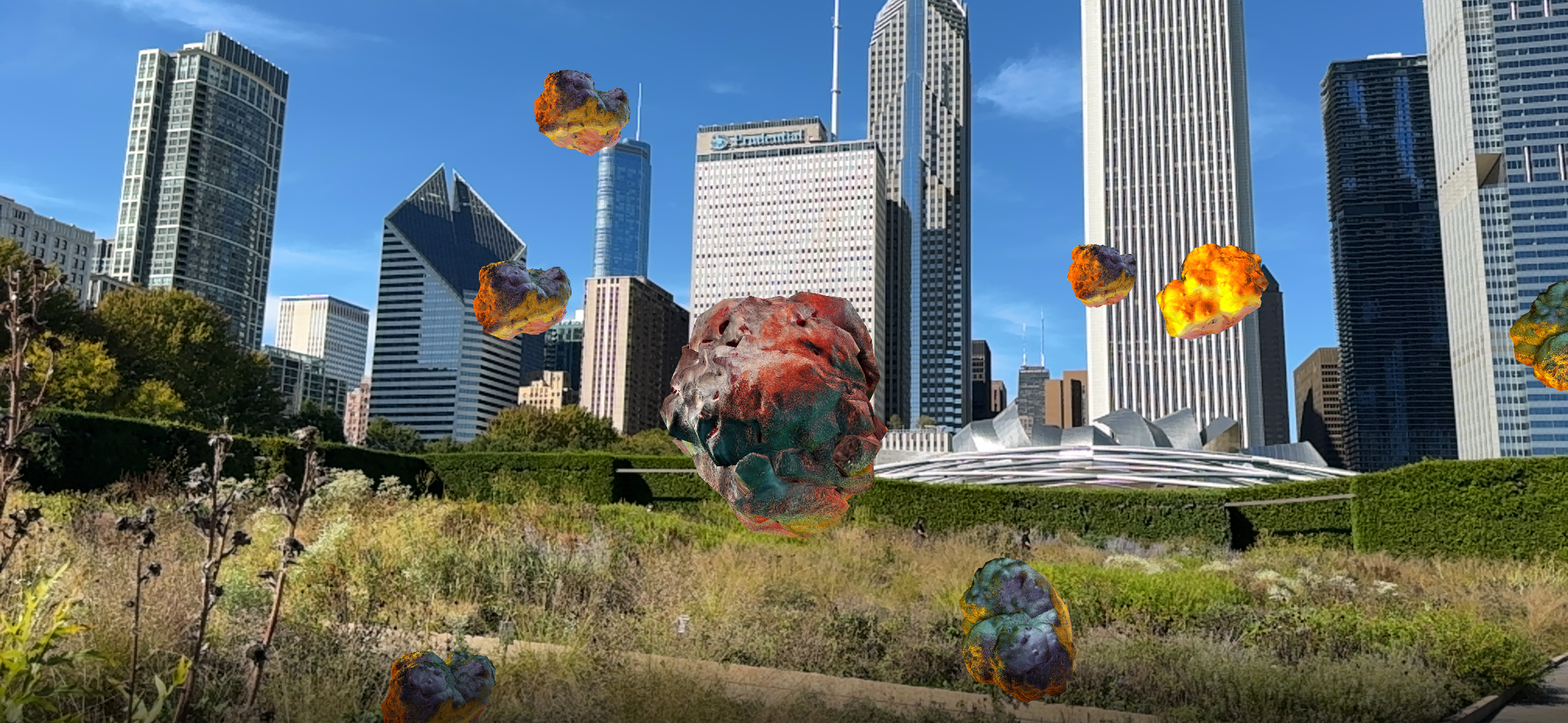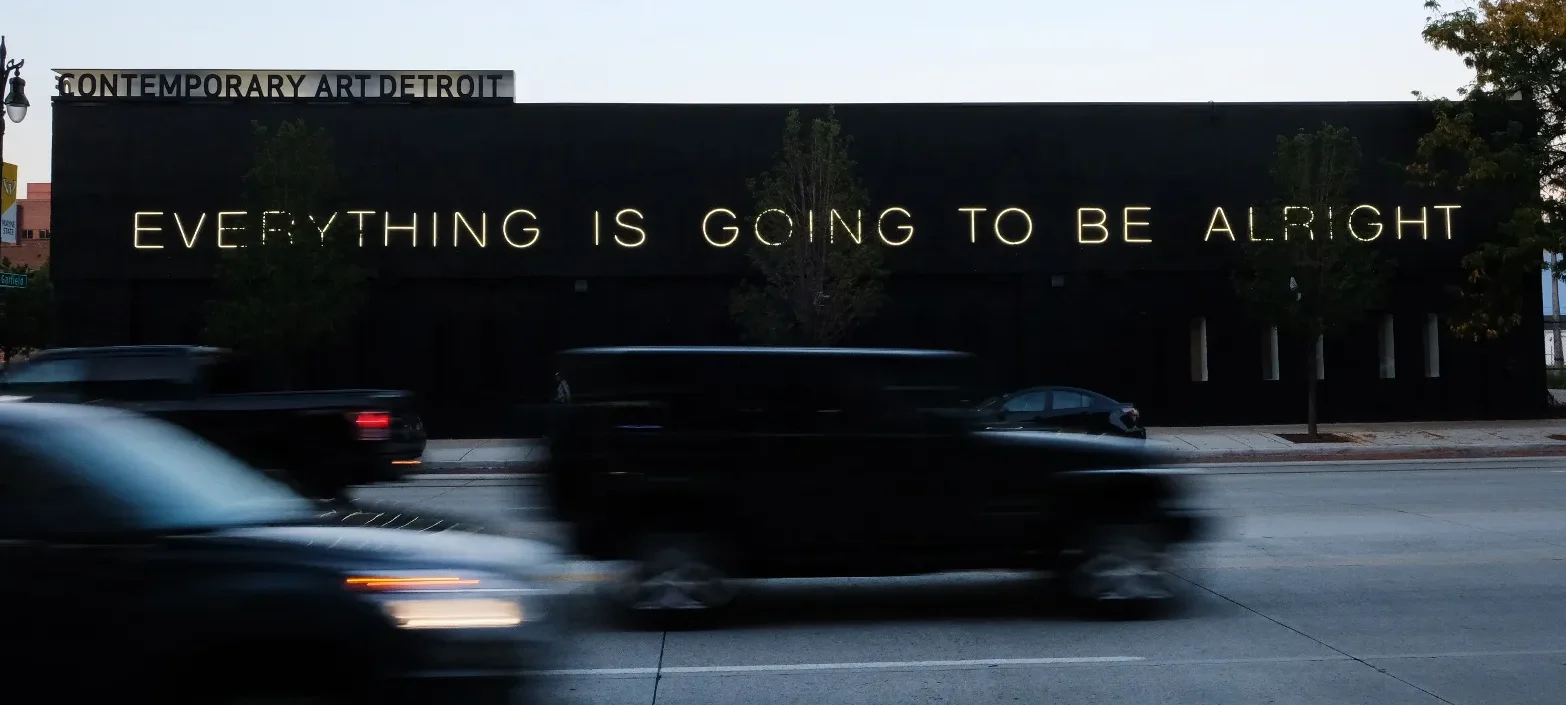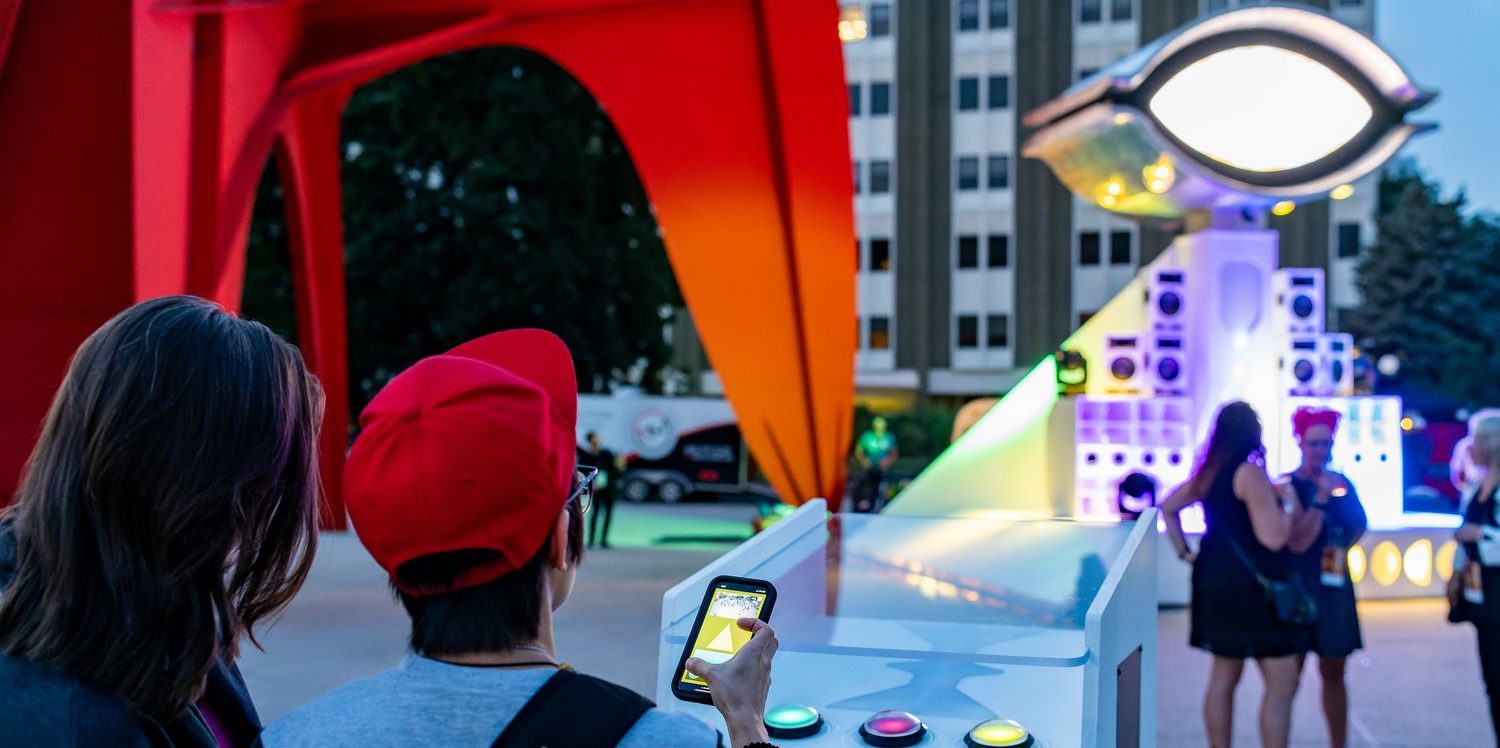Exploring Immersive Media in Michigan and Illinois
New Media

© Cloud Gate by Anish Kapoor
By Léonore Thiriez & Camille Jeanjean
Two neighboring states in the north of the country, each with a strong identity and several points in common: a shared passion for culture, architecture, music and new media.
The state of Illinois, represented by the city of Chicago, a landmark of postmodern architecture shaped by Frank Lloyd Wright and the birthplace of jazz, is a vibrant hub where art and technology intersect.
The state of Michigan, embodied by the city of Detroit, was once a pioneer of the automobile industry with companies like Ford, and gave birth to both Soul and Techno music. After facing economic hardship in 2008, the city is now rising from its ashes, transforming its Art Deco and modernist buildings into centers for advanced technological education.
Chicago’s SAIC, where Art and Technology merge

© Snow Chen and Banruo Chen, Art on the Mart
The Universities of Illinois and Michigan encourage the practical application of theoretical knowledge by putting students in direct contact with works of art. They also offer students the opportunity to produce and exhibit their work. For this, the city and its urban environment are privileged locations. Universities also encourage the creation of facilities by and for students/artists.
The School of the Art of Chicago
In 1982, the School of the Art Institute of Chicago (SAIC) established the first department in the U.S. dedicated to the study of art and technology. Much like the relationship between the Louvre Museum and its affiliated school, SAIC was founded in close connection with its museum counterpart: The Art Institute of Chicago. Students and professionals, study, research, and create alongside both heritage and contemporary artworks from the museum’s esteemed collections.
The Department of Art & Technology / Sound Practices embody this synergy, with over 50 years of radical artistic and pedagogical exploration. Through a rich combination of disciplines, from Creative coding & AI through the history and theory of these forms, the department fosters interdisciplinary practice, encouraging innovation in both artistic research and creation.
One notable example is the Art on the Mart project, which showcased SAIC students’ work through a collaboration with Analog, a student-led initiative. Their sound-and-light artworks were projected onto the stunning Art Deco façade of the Merchandise Mart, facing the Chicago River, offering emerging talents a chance to display their work on the walls of their own city. The collaborative piece Analog brought together students from photography, film, and sculpture departments, enriching the 13 projections with diverse artistic skills and perspectives.
According to a Columbia University study, SAIC is considered “the most influential art school in the United States.” Its Film, Video, New Media & Animation department plays a key role in this reputation. The program embraces a wide range of approaches to drive innovation and push students to explore new techniques. Among its notable alumni is Apichatpong Weerasethakul, an acclaimed independent Thai filmmaker whose work has been featured at major international festivals and recently received a retrospective at the Centre Pompidou.
Reinforcing the bridge between museum and education, SAIC also founded the Video Data Bank in 1976. This initiative addresses the pressing issue of preserving audiovisual and performance art, offering access to more than 6,000 video art titles by over 600 artists.
One of the leading figures in immersive art in Chicago is Julie Walsh, a curator specialized in contemporary, digital, and immersive art. With over 25 years of experience, she brings her expertise to a wide range of spaces, from museums and galleries to educational institutions and all kind of exhibition venues (biennials, festivals, panels). She is the founder of Walsh Gallery, where she showcased contemporary Asian art for 18 years, and has since expanded her focus to include technology in art. Julie plays a key role in connecting artists with institutions and festivals, both in the U.S. and internationally, and regularly advises cultural organizations on how to curate and present new media works. She also works closely with universities to support the next generation of artists working at the intersection of art and technology.
The renewal of Michigan Central in Detroit as a hub for education

© 2025 Quinn Evans – Michigan Central
The city, once representative of the American automobile industry, is continuing its motorized legacy by reinvesting in its infrastructures and know-how. One notable example is Michigan Central, the former train station acquired by Ford and transformed into a campus and hub for advanced technologies. By investing in tech-driven initiatives, Detroit is opening up new opportunities for its residents. Deeply rooted in its history, the center aims to explore the possibilities of future mobility.
Among the programs launched, the Michigan Central Art Program bridges art, technology, and society, with a focus on innovation, equity, and inclusion. Since 2024, the center has offered residences and fellowships to support regional artists working at the intersection of art and technology.
At the academic level, Michigan State University stands out with its cutting-edge programs in New Media and dedicated research labs. One such example is the GEL Lab (Games for Entertainment and Learning), part of the Game Design and Development Program. The lab has produced over thirty games showcased at major industry events, including IndieCade.
Chicago: looking in the sky

Claire Ashley with audioscape by Joshua Patterson Nomadic Fluoratic Phylosian Spawn 2024
Opening the white cube: let the art fill the cities. The cities of Illinois and Michigan make it a point of honor to ensure that art is an initiator of social bonding. To achieve this, art must be exhibited outside and everywhere.
Chicago is home to several venues dedicated to immersive art exhibitions.
Augmented Chicago: Inaugural Realities celebrated the work of four pioneering Chicago-based artists in the field of augmented reality. As part of the city’s ongoing effort to explore the relationship between art and technology, Millennium Park served as both stage and canvas for these four immersive urban experiences.
Similarly, the Adler Planetarium reflects this commitment to blending science and art by offering immersive journeys through space. Through cutting-edge installations, the museum makes otherwise unreachable realms accessible to all audiences.
Detroit: “Everything is going to be alright”

MOCAD by Andrew Zago
For its 2025 edition, the Detroit Month of Design chose the theme “City of Design”. Embracing its strong urban identity and deep pride in its creative spirit, Detroit celebrates itself and its love of art with a festival highlighting new media, fashion, and design. Spread across several neighborhoods, the event turns the city into a creative playground with immersive experiences, exhibitions, fashion shows, and DJ sets, the latter paying tribute to the city’s techno music legacy.
“Everything is going to be alright” is the optimistic message tagged across the striking façade of the Museum of Contemporary Art Detroit (MOCAD), a building originally designed by Albert Kahn and reimagined by Andrew Zago. The museum, founded by Marsha Miro in 1995, regularly showcases new technologies through exhibitions like Code Switch, which brings together contemporary works by Black artists exploring the relationship between the body and the machine in the age of the internet.
Grand Rapids: connecting through art
ArtPrize is an international art competition held annually in Grand Rapids, Michigan. The event awards grants to winning curators, artists, and educators, supporting them in continuing their creative practices.
Among the many disciplines represented, New Media holds a central place. The competition includes works in VR, AR, projection mapping, data visualization, video games, and generative art, reflecting the state’s growing investment in the intersection of technology and artistic innovation. Art is exhibited in conventional venues such as galleries, but also in unusual places such as breweries and parks. In the end, the real intention is to connect festivalgoers, together and around art.

Giant Eye by EIRO Live
The states of Illinois and Michigan are seeking to innovate in the arts by combining technical know-how with artistic practice, contributing to the emergence of new creative forms. Chicago and Detroit seem to be capitalizing on their urban character, architectural heritage, and city spirit to showcase art and make it accessible not only to audiences but also to actively involve their residents. Through innovative university departments, both cities are fostering public engagement in these new artistic practices.
